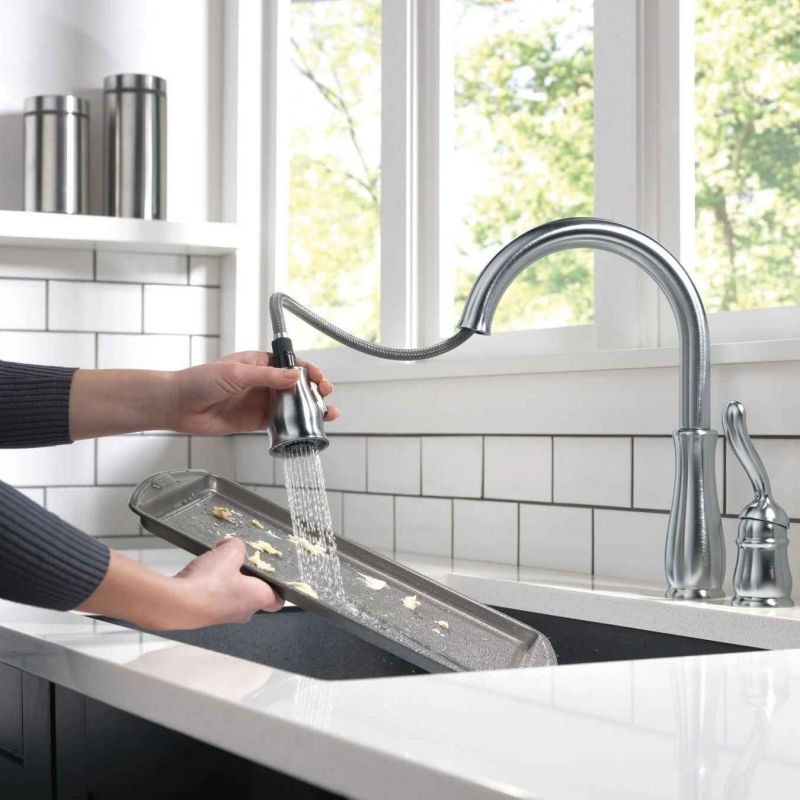 English
English
Jabra Sanitary is a sanitaryware supplier offering toilets, sinks, faucets, bathtubs, etc., at competitive prices. If you're a distributor, wholesaler, or project contractor, get a quote today!
 $23.9 Limited-time Offer
$23.9 Limited-time Offer Consignment Policy
Consignment Policy 20 Years of Experience
20 Years of Experience
Replacing a bathtub faucet can refresh your bathroom's look and improve functionality, especially if the current sink faucet is leaking or outdated. Whether you're dealing with a leaky spout or simply upgrading to a new style, changing the faucet in a bathtub is a manageable task that you can complete with the right tools and a bit of patience.
This guide will walk you through the step-by-step process of how to replace a tub faucet effectively.
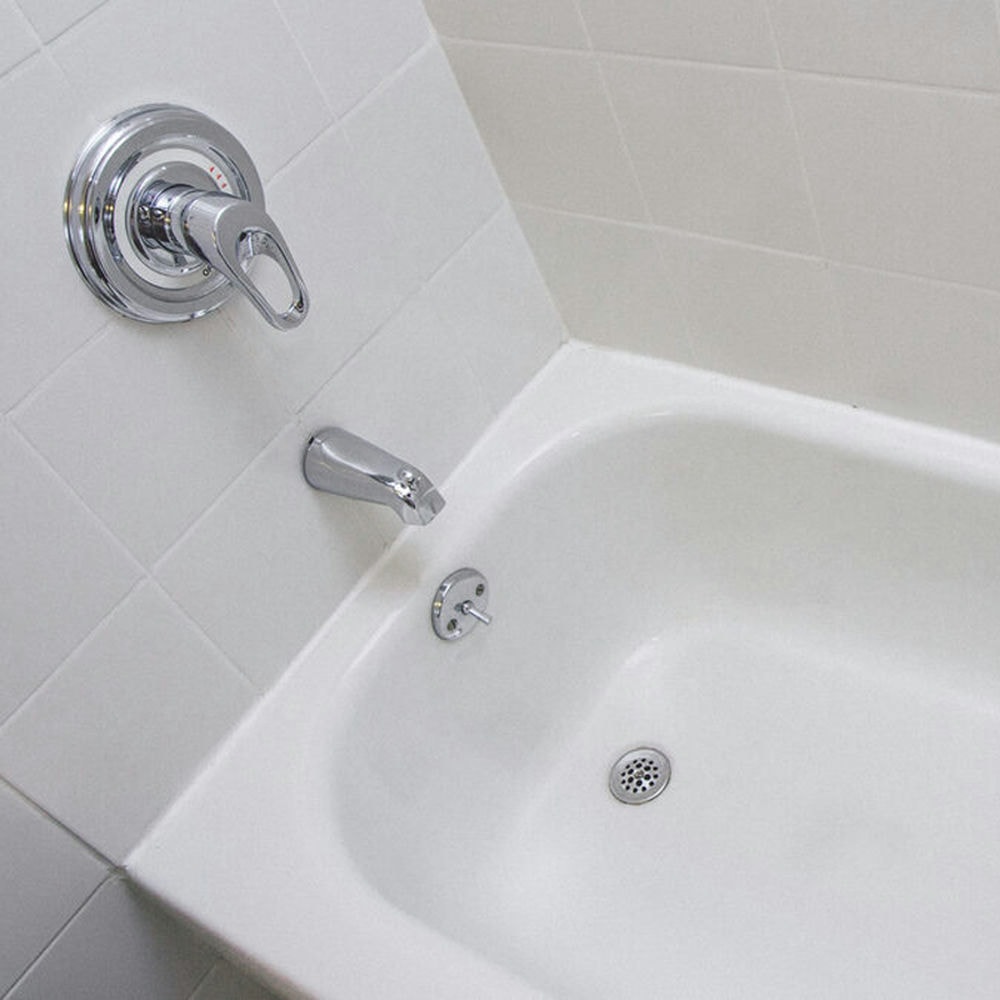
Table of Contents
Before You Begin
Tools Needed to Replace a Bathtub Faucet
Time to Finish Changing the Faucet in a Bathtub
How to Replace a Bathtub Faucet in 9 Steps
DIY or Reach Out to a Professional Plumber?
FAQs
Conclusion
Before You Begin
Before diving into the project, there are a few things to consider. Ensure that you have a clear understanding of the faucet type you currently have, as this will affect the replacement process.
If the faucet is old or showing signs of wear, it might be worth replacing the shower-body altogether for a more comprehensive update. Additionally, always turn off the water supply to avoid flooding or water damage during the replacement.
Tips
- If your bathtub faucet requires replacement, consider updating the shower-body for improved performance and consistency.
- Have a bucket and towels ready to catch any residual water when removing the faucet.
- Make sure to have all necessary parts and tools on hand before starting to prevent unnecessary interruptions.
Tools Needed to Replace a Bathtub Faucet
To replace a bathtub faucet, you'll need the following tools and materials:
- Adjustable wrench
- Screwdriver (Phillips and flat-head)
- Plumber's tape
- Caulking gun and waterproof bathroom caulk
- Replacement faucet kit
- Towel or drop cloth
- Bucket
- Measuring tape
- Allen wrench (if needed for handle removal)
Safety gear, such as gloves and safety glasses, is also recommended to protect yourself from sharp edges and debris while you remove bathtub faucets.
Time to Finish Changing the Faucet in a Bathtub
The time required to replace a bathtub faucet can vary depending on your experience and the condition of the existing faucet. On average, this project can take anywhere from 1 to 3 hours.
Factors that might affect the duration include the type of faucet, ease of access to plumbing, and whether any parts are corroded or stuck. Setting aside adequate time and working patiently will help ensure a successful replacement of your tub faucet.
How to Replace a Bathtub Faucet in 9 Steps
Follow these nine steps to replace your bathtub faucet efficiently. Ensure you have all the necessary tools and parts before you begin.
Step 1: Turn Off Water Supply
Locate the water supply valves for the bathtub. These are usually found near the tub or in a basement or utility room. Turn the valves clockwise to shut off the water supply.
If you cannot find the individual shut-off valves, you may need to turn off the main water supply for the house. Open the faucet to drain any remaining water in the pipes.
Step 2: Lay a Towel or Drop Cloth in the Bottom of the Tub
Place a towel or drop cloth in the bottom of the tub to protect the surface from scratches or damage. This also helps prevent small parts, such as screws or washers, from falling down the drain.
Make sure the towel covers a large enough area to catch any debris or tools that might slip during the process of changing the faucet in a bathtub.
Step 3: Remove a Bathtub Spout
Start by removing the bathtub spout. There are generally two types of spouts: slip-on and threaded. For a slip-on spout, look for a set screw on the underside of the spout.
Use an Allen wrench to loosen the set screw, then gently pull the spout off the pipe. For a threaded spout, use an adjustable wrench to turn the spout counterclockwise until it unscrews from the pipe.
Be careful not to use too much force to avoid damaging the plumbing while you remove the bath faucet.

Step 4: Remove Bathtub Handles and Stem
Next, remove the handles and stem of the faucet. First, pry off the decorative cap on the handle using a flat-head screwdriver to reveal the screw beneath.
Use a Phillips screwdriver to remove the screw, then pull the handle off. If it's stuck, you may need a handle puller tool to gently remove it without causing damage.
Once the handle is off, use an adjustable wrench to unscrew the stem. Turn the stem counterclockwise until it's free, and then pull it out of the valve. This process will help when you need to replace a bathtub faucet with new handles and stem.
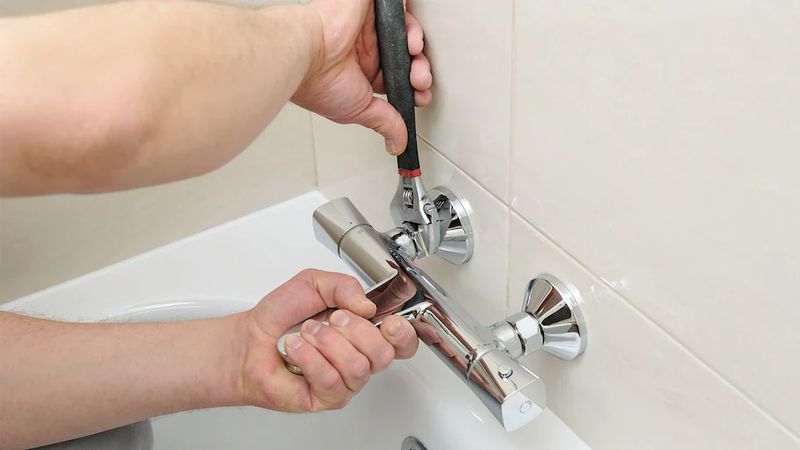
Step 5: Measure the Pipe and Purchase Replacement Parts
Before purchasing replacement parts, measure the length and diameter of the pipe that the spout attaches to. This ensures you buy the correct size replacement spout and stem.
Also, take note of the faucet type (single-handle or double-handle) and faucet brand, as these details can be important when selecting compatible parts.
With accurate measurements, head to your local hardware store to purchase the necessary replacement faucet kit.

Step 6: Replace a New Bathtub Spout
Install the new bathtub spout by following the reverse steps of removal. If your new spout is a slip-on type, slide it onto the pipe and tighten the set screw using an Allen wrench.
Make sure the spout is aligned correctly and securely fastened to prevent leaks. For a threaded spout, wrap plumber's tape around the pipe threads to ensure a watertight seal.
Then, screw the spout onto the pipe by turning it clockwise until it's snug. Avoid overtightening, as this can damage the plumbing or the spout.
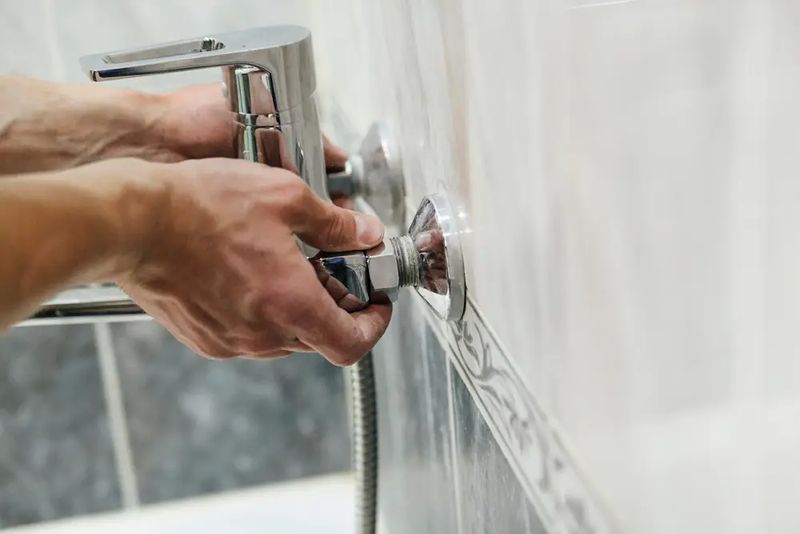
Step 7: Replace Bathtub Faucet Handles and Stem
Now, it's time to install the new handles and stem. Insert the new stem into the valve and tighten it using an adjustable wrench. Make sure the stem is secure but avoid over-tightening.
Place the new handle onto the stem and fasten it with the provided screw. If the handle has a decorative cap, press it into place to cover the screw.
Repeat this process for each handle if you have a double-handle faucet. Test the handles to ensure they turn smoothly and align correctly.
Step 8: Add New Caulking
To prevent water from seeping behind the faucet and causing damage, apply a bead of waterproof bathroom caulk around the edges of the spout and handle bases.
Use a caulking gun to apply the caulk evenly, then use a damp finger or a caulk-smoothing tool to smooth it out and create a clean seal. Allow the caulk to dry according to the faucet manufacturer's instructions before using the faucet.
Step 9: Turn Your Water On and Test for Leaks
After installing the new faucet and applying caulk, turn the water supply back on. Slowly open the water valves and let the water flow through the new faucet.
Check all the connections, including the spout and handles, for any leaks. If you notice any drips or leaks, tighten the connections as needed and reapply caulk if necessary. Once everything is secure and leak-free, your new bathtub faucet is ready for use.
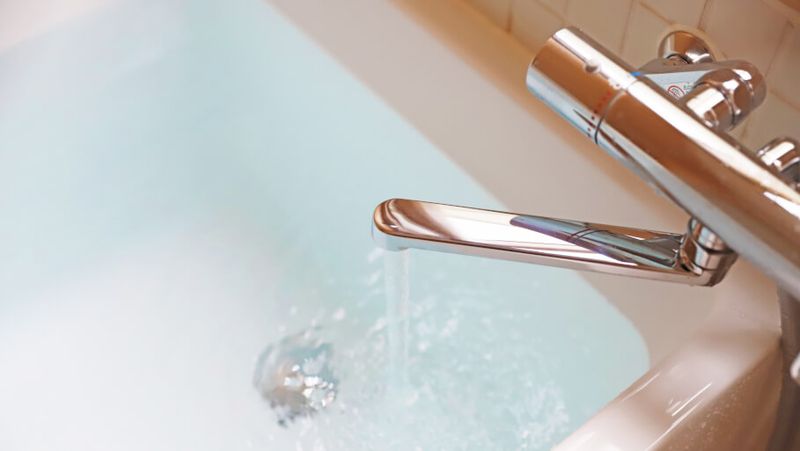
DIY or Reach Out to a Professional Plumber?
Replacing a bathtub faucet is a manageable DIY project for those with some plumbing experience. If the process involves basic parts replacement and the existing plumbing is in good condition, most homeowners can handle the task.
However, if you encounter issues like corroded pipes, complex valve systems, or if the replacement requires extensive modifications to the plumbing, it's best to consult a professional plumber.
A plumber can ensure that the installation is done correctly and safely, preventing potential water damage and costly repairs in the future.
FAQs
Are Most Bathtub Faucets Universal?
No, most bathtub faucets are not universal. They come in various types and sizes, so it's important to find a faucet that matches your existing plumbing setup.
Measure the pipe and take note of the faucet type (single-handle, double-handle, or diverter) before purchasing a replacement.
Some brands have proprietary designs, so it's advisable to bring the old faucet or specific measurements to the store to ensure compatibility.
Can You Change a Bathtub Faucet Without Changing the Valve?
Yes, you can change a bathtub faucet without replacing the valve in some cases. If the valve is in good condition and compatible with the new faucet, you can simply replace the external components like the spout and handles.
However, if the valve is outdated, leaking, or incompatible with the new faucet, it's recommended to replace it along with the faucet to ensure proper functionality and avoid leaks.
What Are the Different Types of Bathtub Faucets?
Bathtub faucets come in various types, including:
- Single-handle faucets: Control both hot and cold water with a single lever or single hole.
- Double-handle faucets: Have separate handles for hot and cold water, offering more precise temperature control.
- Wall-mounted faucets: Installed on the wall above the bathtub, often used with freestanding or clawfoot tubs.
- Deck-mounted faucets: Mounted on the rim of the tub or a nearby deck, commonly found in drop-in or alcove tubs.
Do You Need a Plumber to Replace a Bathtub Faucet?
Whether you need a plumber depends on your comfort level with plumbing tasks and the complexity of the faucet replacement. If the job involves simple parts replacement and you have some DIY experience, you can likely handle it yourself.
However, if you're dealing with old, corroded plumbing, a complex valve system, or require modifications to the existing plumbing, it's advisable to hire a professional plumber to ensure a correct and safe installation.
How Much Does It Cost to Replace a Bath Faucet?
The cost to replace a bathtub faucet varies depending on factors such as the type of faucet, labor rates, and whether you hire a professional.
For a DIY project, expect to spend between $50 and $200 on parts, depending on the quality and style of the faucet. Hiring a plumber can add $100 to $300 in labor costs. Complex installations or valve replacements may increase the overall cost.
When Should I Replace My Bathtub Faucet?
Consider replacing your bathtub faucet if you notice persistent leaks, corrosion, or difficulty in turning the handles.
Upgrading the faucet can also be a good idea if you're renovating your bathroom or want to improve water efficiency and functionality. Regular maintenance and timely replacement can prevent more serious plumbing issues down the line.
Conclusion
Replacing a bathtub faucet is a straightforward task that can enhance the appearance and functionality of your bathroom. By following the step-by-step guide, you can successfully replace the faucet, ensuring a watertight seal and proper operation.
While this project can be a DIY endeavor for many homeowners, don't hesitate to consult a professional plumber if you encounter any challenges. Proper installation not only improves your bathroom's aesthetics but also helps prevent future plumbing issues.









